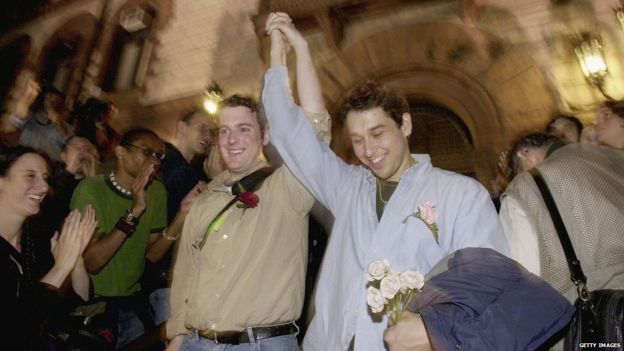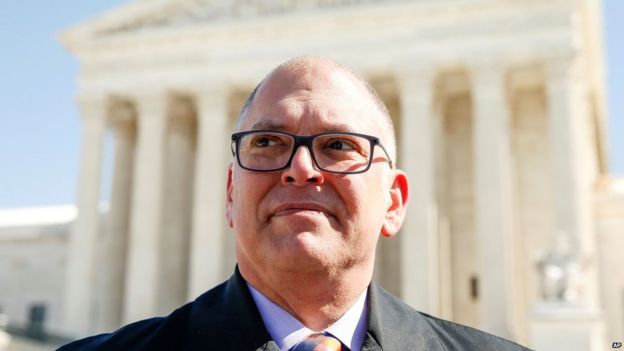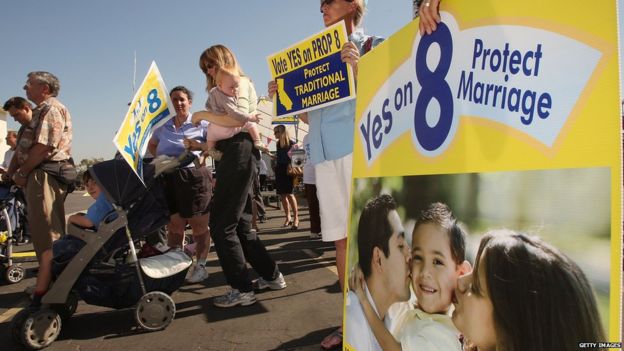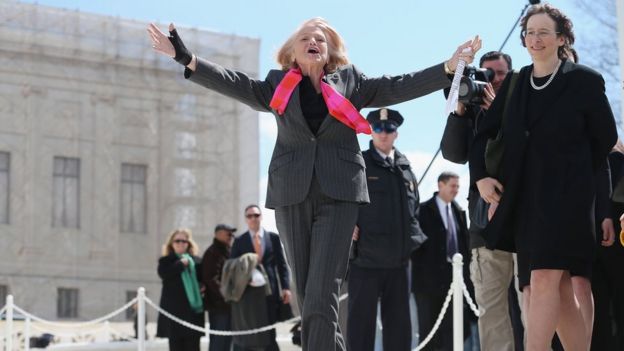Inga and Richard invited me this morning to join their hiking group and I gladly accepted and met the group at a local parking lot where 12 members car pooled about one hour to here
It was only a short hike to the falls which I think you agree are quite lovely!!
Then we went on a wonderful trail through the trees…..
by the side of the river
Then along this trail
We eventually came out at Lake Comox and had lunch with these views…
Then back to the cars we hiked around 15km and it was wonderful…..
Tonight a quiet night and I am getting ready for what will be a fun filled day tomorrow..stay tuned!!!
A landmark day!!!!
How legal tide turned on same-sex marriage in the US

Gay marriage ruling
Same sex marriage is now legal in the entire US after a Supreme Court ruling striking down state marriage bans.
The ruling means all US states must grant marriage licences to gay and lesbian couples and recognise marriages that have taken place in other states.
So how did we get to this point?
 One of the first couples to wed in Massachusetts
One of the first couples to wed in Massachusetts
In 1996, the US Congress passed and President Bill Clinton signed the Defense of Marriage Act, a law that prohibited federal recognition of same-sex marriages.
In 2003, Massachusetts judges ruled the state constitution allowed gay marriage, and marriage licences followed shortly after that. In the following years, a handful of states passed gay marriage bans while others began working towards allowing same-sex unions - either by court order or legislation.
One high-profile ban occurred by referendum in California in 2008 after courts had previously allowed same-sex marriage.
This continued across the US until the Supreme Court heard a challenge to the Defense of Marriage Act in 2013.
What did justices have to decide in this case?
 Jim Obergefell brought a lawsuit against the state of Ohio after the state refused to recognise his marriage to his late-husband
Jim Obergefell brought a lawsuit against the state of Ohio after the state refused to recognise his marriage to his late-husband
The justices, who had previously have stopped short of resolving the question of same-sex marriage nationally, had to consider whether or not states are constitutionally required to issue marriage licences and if states are required to recognise same-sex marriages performed elsewhere.
How many states previously allowed same-sex unions?
Before the ruling, thirty-six states were issuing marriage licences to same-sex couples, as well as Washington DC, which sets its own marriage laws but is not legally a state.
 A referendum on gay marriage in California in 2008 put the legal status of previously performed marriages in question
A referendum on gay marriage in California in 2008 put the legal status of previously performed marriages in question
A critical turning point came in October 2014, when the Supreme Court chose not to hear appeals against lower court rulings that had overturned same-sex marriage bans - expanding the legality of gay unions to many more states.
In other states, same-sex marriage has been approved either through legislation or voter referenda.
Michigan couples were briefly able to marry before a court stayed a ruling overturning its ban.
What have been the key Supreme Court rulings?
On 6 October 2014, the court turned away appeals from five states with gay marriage bans on the books that had challenged appeals court rulings overturning those bans.
In challenging the gay marriage bans, proponents relied on a 2013 Supreme Court ruling in the case of United States v Windsor.
 Edith Windsor, was the plaintiff in the last gay marriage case at the Supreme Court
Edith Windsor, was the plaintiff in the last gay marriage case at the Supreme Court
In that case, the court overturned the Defense of Marriage Act (Doma), which barred the federal government from recognising same sex marriages.
Under Doma, for example, individuals in same-sex marriages were ineligible for benefits from federal programmes such as the Social Security pension system and some tax allowances if their partners died.
Another key case, Hollingsworth v Perry of 2013, was filed by two lawyers, Theodore Olson and David Boies, working together on behalf of their California clients, Kristin Perry and Sandra Stier and another couple, Jeffrey Zarrillo and Paul Katami.
They argued that the Supreme Court should strike down a state law, called Proposition 8, which stated that marriage is between a man and a woman. The law, approved by California voters in 2008, overrode a state Supreme Court decision that allowed for same-sex marriage.
What is next?
Marriages will continue as previous in the 36 states. The remaining states will have to issue licenses, although it is unclear how long they have to comply with the court's ruling, but there were reports of court clerk offering licences only an hour after the Supreme Court decision.
Yashi Kochi!!!


















No comments:
Post a Comment